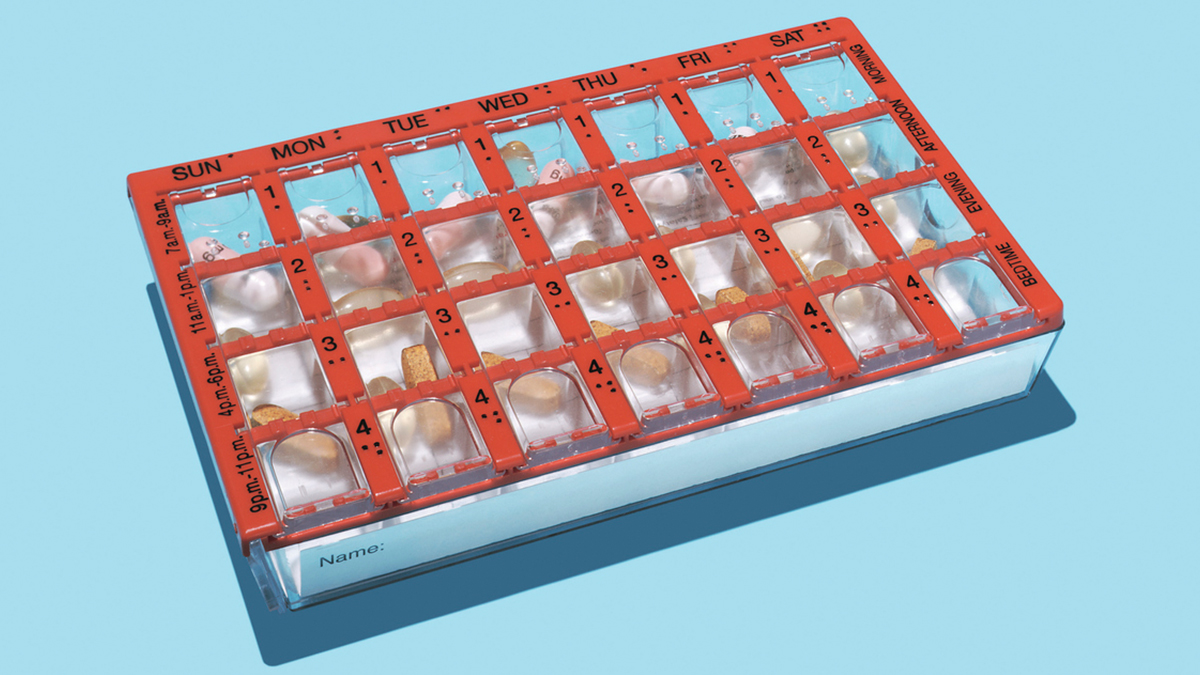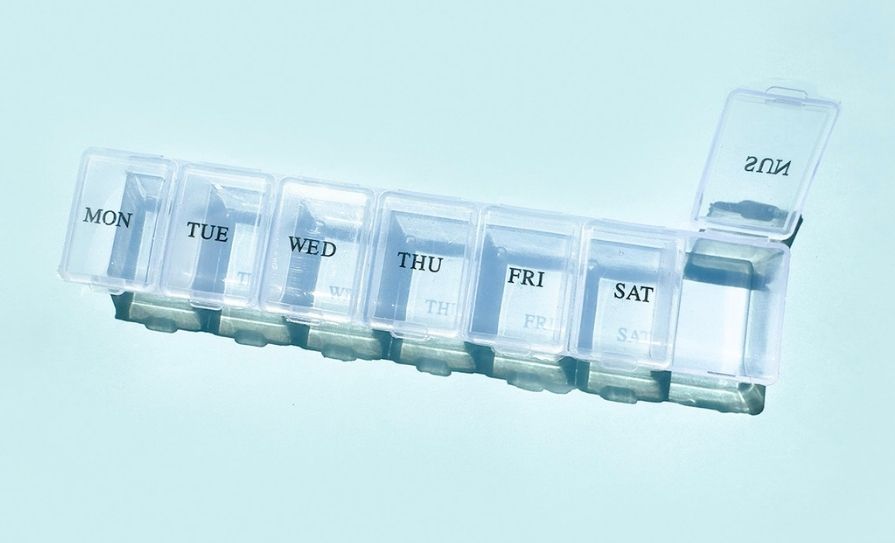Writing for Irish Pharmacist, Breda Heneghan MPSI looks at the multifactorial considerations in the area of medications adherence from the viewpoints of the pharmacist and the patient
Today in Ireland, we have an elderly population (65+yrs) of 637,567, which equates to 13.4 per cent of the population. Some 65 per cent of this population suffer from two or more chronic diseases (ie, diabetes and hypertension) and they are required to take multiple medications to help control these problems. As the complexity of health problems increase, this puts an increasing burden of managing treatment on the patient and their families. Evidence shows that the more complex a treatment regimen becomes, the higher the risk that the patient is not following or adhering to the treatment guidelines. This means that many patients living with multiple conditions do not get to reap the benefit of their prescribed medicines, which we know will work if taken correctly. It can also lead to unnecessary suffering and wasted resources; however, patients are often reluctant to tell their doctor or pharmacist that they do not take their medicines or that they struggle to take their medicines correctly. Pharmacists are in a perfect position to identify and help patients with medication adherence issues as they often engage with the patient more frequently than other health professionals, ie, monthly for example, when the patient is picking up their prescription. Pharmacists are medicines experts and can provide a medicines review and possible introduction of a Monitored Dosage System if deemed necessary in the form of weekly/monthly blister packs.
Financial and health costs of not taking medicines properly
Non-adherence to prescribed medication is costing EU governments approximately €125 billion annually and contributes to the premature deaths of 200,000 Europeans per year. In the Irish population, more than €319 million is spent each year on medicines for the one-in-five of the population aged over 50 with polypharmacy. When long-term medication is prescribed for patients with chronic diseases, it is estimated that approximately 50 per cent of individuals fail to adhere to the prescribed regimen.
“Drugs don’t work in patients who don’t take them” C Everett Koop, MD
If you do not take your medication, it is not going to work — it is that simple! But adherence is not simple. The reasons behind poor medication adherence are complex, and can sometimes go beyond a lack of information, forgetfulness, or even access to medication itself. Understanding the complexity of non-adherence factors is key to addressing the issue.
Non-adherence categorised as two types: Intentional and unintentional
Unintentional non-adherence relates to barriers beyond a person’s control which prevent them from following a prescribed treatment. These include obstacles such as financial barriers, lack of information or understanding about their condition or prescribed treatment, forgetfulness, and ability.
Intentionally not taking medicines
Intentional non-adherence relates to the person’s beliefs, perceptions and motivations, where a person is reluctant to adhere due to attitudes, concerns, opinions or fears.
One useful way to establish what might be driving non-adherence is known as the ‘Perceptions and Practicalities approach’. Perceptions refers to how people’s beliefs about medicines might explain their medication-taking behaviour. For example, patients may have concerns about potential harmful side-effects or believe that prolonged use of medicines might be toxic. Some patients may not see medicines as being necessary. This is particularly the case in conditions that are asymptomatic, such as hypertension or hyperlipidaemia. The medications used to treat these conditions are also typically experienced as neutral, which might initially seem positive. However, when patients feel no different whether they take or fail to take their medications, this can pose a problem for long-term adherence.
Unintentionally not taking medicines
Practicalities refer to all those factors that are not about the patients’ motivation to take their medication. This can include memory problems, costs, access to medications and lack of skill in taking medication appropriately.
The pharmacist can help encourage questions from the patient
Here are some key questions that the pharmacist can discuss with the patient to help initiate, frame and guide a conversation about their medicine-taking:
1. Opener: ie, ‘You have a lot of medications to manage.’ ie, ‘Are you taking your medications by doing the following…?’
2. Encourage the patient to elicit more information/guidance from you: ie, ‘Are there any medications that you would be less likely to take?’ ‘Why is that?’ ‘Are you worried?’ ‘Do you think they are doing you any good?’
3. See if your questions can encourage the patient to offer more insight. ie, ‘Is there anything that you could do differently that you think would help with taking the medications?’
Help to ensure medication is taken as prescribed
Here are some general strategies that might be helpful:
1. Some patients can get their medications provided in reminder packaging from the pharmacist. The pharmacist can deem if this is necessary on a case-by-case basis — Monitored Dosage Systems (MDS) or blister packs.
2. Some patients find it helpful to link taking their medication to a routine they do every day. For example, brushing their teeth or having a cup of tea in the morning or evening after they have eaten.
3. Is there anyone at home who can give the patient a reminder to take their medications or make sure that they have them available? ie, putting a reminder into their phone or getting someone to do so for them.
4. Remind the patient to see what happens to their blood pressure/cholesterol/other relevant sign or symptom over the next few weeks if they can take all doses of their medication as and when prescribed.
Medication adherence
Capability, Opportunity and Motivation all influence how patients take their prescribed medication.
Capability: Does the patient have the physical and psychological capacity to take the medication as prescribed? ie, Does the patient have arthritis which makes opening tablet containers difficult? (Pharmacist can offer the patient tablet vials without the child-resistant closures to improve ease of opening); Does the patient have any memory difficulties? (Perhaps the patient could benefit from getting their medication in a weekly or monthly blister pack.)
Opportunity: Does the patient have the physical opportunity to take the medication as prescribed? Is it easy to source, collect and pay for the medication? (ie, many pharmacies provide a prescription home delivery service to patients.)
Motivation: Does the patient want to (ie, have the motivation) take the medication as prescribed? Have they noticed any side-effects?
Unintentional reasons may be due to forgetfulness, confusion or a lack of integrating medication-taking into daily routine. If this is the case, then the patient might benefit from an organisational-based approach to improving adherence, like blister packs from their local pharmacy.
MDS — blister packs
There are multiple types and different options for patients, depending on individual concerns. An MDS is any medication storage and organisational device designed to simplify patients’ medication usage and commonly comes in the form of a box or blister pack divided into the days of the week and times of day. Tray-style blister packs are suitable for home use. There are other pouch/bubble-type systems available which are for people with more active lifestyles, as individual time-slots containing medications can be taken out of the tray.
Determining if a patient may benefit from medicines in a blister pack
Some of these criteria can be used by a pharmacist to determine if the patient would benefit from a blister pack:
• Is the patient on a complex medication system?
• Is the patient confused about medication instructions?
• Does the patient regularly forget to take their mediation?
• Is there evidence of medication wastage/medication returns to the pharmacy?
• Does the patient visit the pharmacy irregularly to collect their medication?
• Has the patient’s carer/nurse/doctor requested assistance or raised medicine adherence concerns?
• Does the patient have learning difficulties, eyesight problems or dementia?
Not all medicines can be included in the blister packs, perhaps due to their prescribing directions (ie, take only when needed), their stability or storage requirements. The blister packs require advance planning, so encourage patients to notify the pharmacy at least 48 hours in advance of when the next pack is due.
The pharmacist can help simplify complex medication regimens for patients
Blister packs provide patients and their families support in managing their healthcare requirements, especially as they age and their needs become more complex. Elderly patients living alone can retain independent living with supervision as required, confident that their medication needs are being looked after correctly.
Another option is to reduce the number of tablets to be taken by patients with multimorbidity; a move toward combination products available can be utilised (ie, three active ingredients in one tablet). However, the increased cost of these formulations must be kept in mind. This can be discussed in further detail with the prescriber and pharmacist.
Additionally, the use of prolonged-release formulations (where clinically suitable) would further reduce the frequency of taking a tablet. So, a once-daily prolonged-release tablet is better than a twice-daily tablet in terms of adherence.
Pharmacists are in a great position for medication review due to monthly interactions with the patient/carer or families and clear insight into what medications are actually collected on a regular basis (versus what is prescribed). These consultations are also an opportunity for patient education and feedback on effectiveness and side-effects of therapy and may require feedback to and communication with doctors (to optimise medicine regimen); however, clear consent will be obtained by the pharmacist to avoid breakdown of patient trust.







